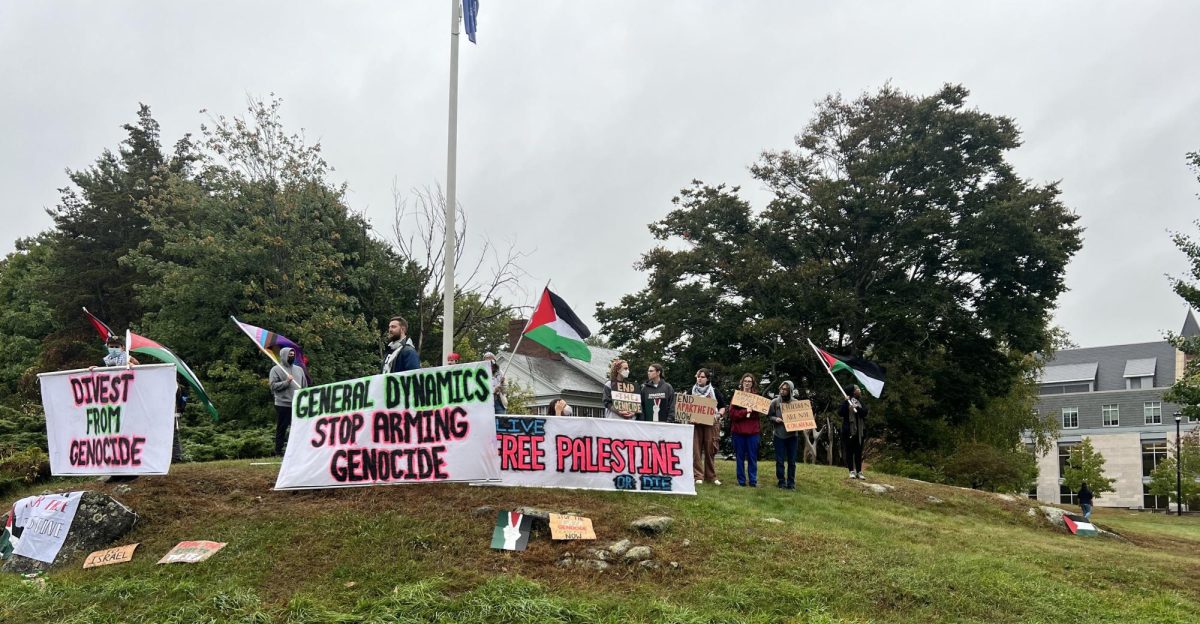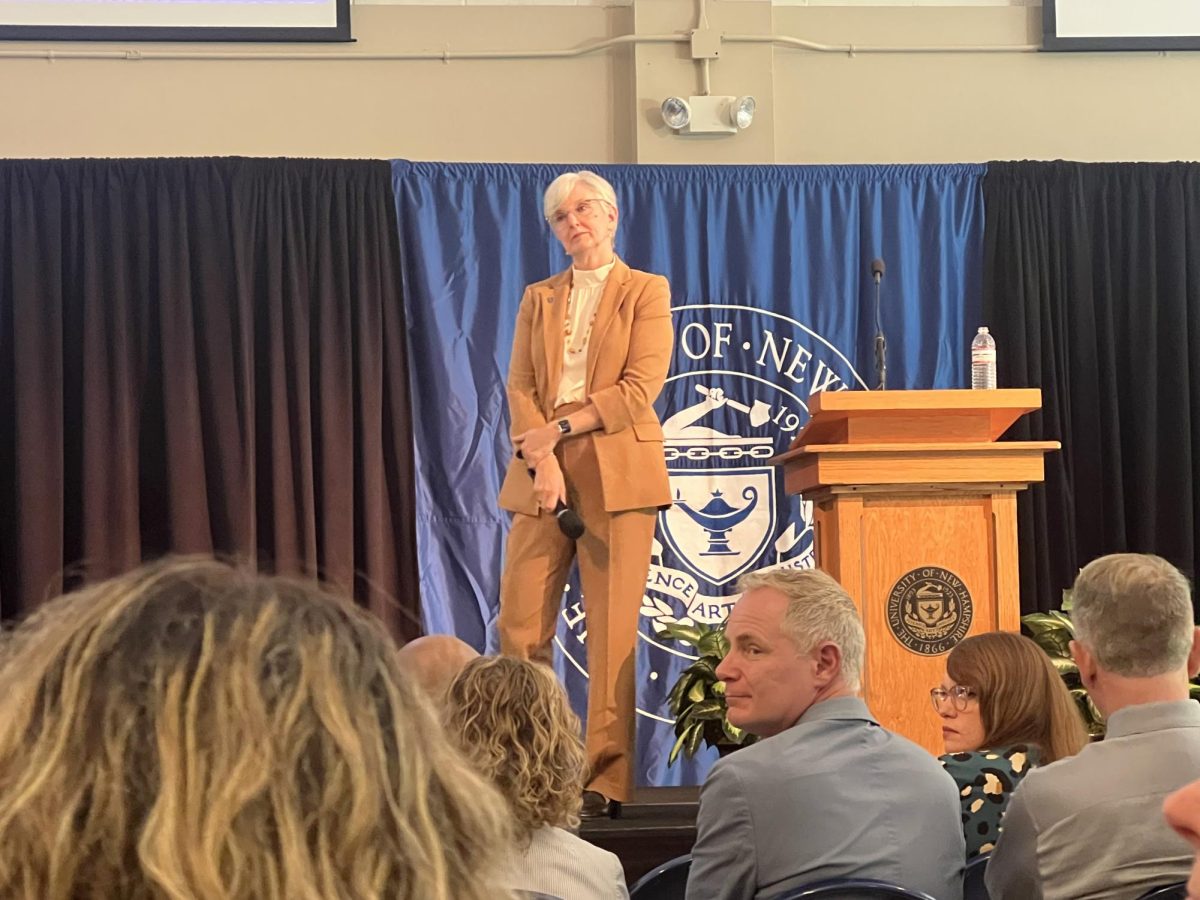Students and professors alike crowded into DeMeritt Hall Room 112 for a lecture by Professor Helen Morales, the argyropoulos chair and professor of hellenic studies at the University of California, Santa Barbra. The lecture, titled “Naked Power? Nudity and Protest from Lysistrata to Black Lives Matter,” took place on Thursday, March 30 from 5:40 to 7:30 p.m.
The lecture was sponsored by the John C. Rouman Classical Lecture Series, the Department of Classics, Humanities and Italian studies, the Epsilon Upsilon chapter of Eta Sigma Phi and the UNH College of Liberal Arts. Morales awed the audience with the present day examples of protests using principles brought on by the ideas of Aristophanes and his comedy “Lysistrata” which was one of the earliest examples of a naked woman’s body being used as protest. In this particular play, it was a protest against men’s fighting.
“The play was first performed in 411 BCE when the Greek cities Athens and Sparta had been battling each other for over 20 years in the civil conflict known as the Peloponnesian War,” Professor Morales said. “In the play, the women’s strategy is to go on sex strike” until the men can stop fighting.
During the play, Lysistrata, the leader of the sex strike, brings up a nude female character called Reconciliation in front of Athenian and Spartan delegates. “Reconciliation does not speak, Lysistrata speaks, offering cogent arguments for peace,” Morales said.
The delegates make peace by dividing up Greek territory by dividing up the naked body of Reconciliation. After this process, they were able to have sex with their wives again, as the strike had ended.
Helen Morales goes on to give modern day examples of women using their naked bodies to protest.
Protests, like those shown in Lysistrata, were discussed in the rest of the lecture. One example was Leymah Gbowee, the Liberian peace activist who, in 2011, was awarded the Nobel Peace Prize for her role in ending the Second Liberian Civil War.
“The most well known part of her activism was the so-called sex strike that she and her coalition of Muslim and Christian women organized in order to keep their men focused on ending the violence,” Professor Morales said.
But this wasn’t the only thing similar to Lysistrata. Gbowee and fellow activists had traveled to a peace summit in Ghana in 2003 where negotiators regarded the summit as a paid vacation. Outraged, “Gbowee led a group of protestors from their seats outside the building and barricaded the men inside on their lunch break,” Morales said. When security guards rushed to them, Gbowee began to strip which in some countries is a curse to see a married or elderly woman naked. This drove the men to get something done as far as peace negotiations.
Other modern day examples of protests that use nudity are Black Lives Matter protests against police violence where women lined up semi-naked with writing on their bodies in California. The nakedness of them forces you to look, unable to ignore the writing on the bodies of the protestors.
Although the play “Lysistrata” was written in 411 BCE, its method of using nudity as a form of protest is used as a backbone to many protests today. The lecture highlighted the historical theory that history repeats itself.
You can find more information on the John C. Rouman Classical Lecture Series on their website http://helleniccomserve.com/classical.html.





















